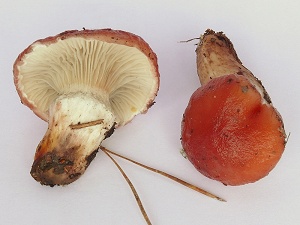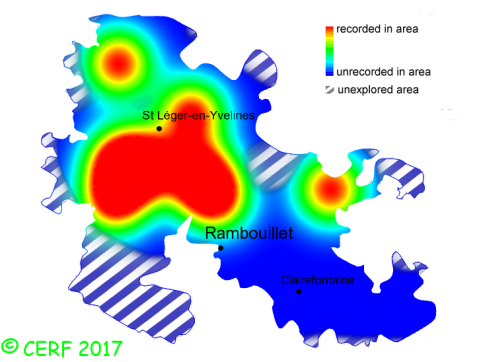| Gomphidius roseus (Fr.) Fr. |
|
|
|
|
|
|
The cap is pink to vinaceous red. The cap surface is smooth. The stem is white washed with pink or red, with a ring zone (cortina remains). The flesh is white, red under the cap surface, unchanging; its taste is mild; the odour is not distinctive; its texture is fibrous. The gills are white then ash grey then blackish, decurrent, distant . The spore print is brown to black. This species is mycorrhizal. It grows on the ground, in coniferous woods, with the Bovine Bolete (Suillus bovinus), on a rather acid soil, only under pine. The fruiting period takes place from July to November.
Chemical tests : flesh becoming vinaceous brown when in contact with ammonia (NH3), yellowish-green when in contact with iron sulphate (FeSO4). Distinctive features : often with the Bovine Bolete (Suillus bovinus), thick and distant gills, easily detached from cap; covered with black stains when aging; stem sometimes washed with yellow at its base; blackening when touched Gomphidius roseus is quite rare and scattered in the forest of Rambouillet, and is infrequent, more generally speaking . | ||
|
page updated on 14/01/18

